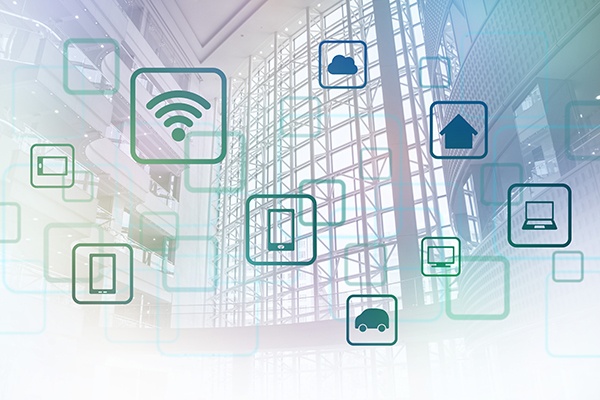
The Internet of Things -- now getting abbreviated to IOT -- has been a buzzword for a few years now, but is really starting to change the way that tenants, landlords and buildings interact. New sensor technologies coupled with much more intelligent big data-driven software are enabling buildings to go well beyond saving energy and automatically dimming lights.
Before going into the future, the current applications of IOT -- as described above -- are real and valuable on their own right. Sensor laden buildings don't need to have an entire floor's worth of lights left on all night either for an empty floor that might have someone come in or for a single worker. Instead, they can sense who is there, who is not, and set lighting accordingly. The best systems can even modify the quantity and color of the light to better support employee health, productivity, or both. HVAC systems enabled with sensor technology can not only vary temperature to achieve the optimal blend of comfort and efficiency but also track indoor air quality to better ventilate. They can even measure the number of people in a space to proactively change airflow before air quality deteriorates.
Imagine never looking for a coworker. Or waiting for an elevator. Advanced IOT buildings can know where everyone is, creating responsive directories that help you connect with coworkers instead of empty desks. In the future, building control systems will know where you typically go in the building and when. They can sense your ID or your smartphone as you start down the hall and send a dispatch elevator to the floor right when you need it, saving you from waiting.
IOT can help you use your space more efficiently. The proximity and pressure sensors that tell buildings how many people are in the building and where can also measure utilization. Your space can tell you which conference rooms are most heavily used and which beanbag chairs sit empty so that you can more effectively reconfigure your space. They can pinpoint hallways that are too crowded so that you can move people around. If you aren't sure whether your workers prefer espresso or smoothies, just put sensors in front of each machine in your break area and you can see how many people use them -- and whether it's a large group of different people or one or two caffeine or kale addicts.
As IOT technology continues to advance, new applications will come to light. Whether it gets used for better management, better energy efficiency, better employee health, or higher space utilization, the more data that an office space has, the more effectively it can serve its tenants.
Other articles to check out:
Understanding Your Lease Obligations
Corporate Real Estate and Cloud Technology
Ways Technology is Affecting Commercial Real Estate
Subscribe to our blog for more great CRE tips!!








